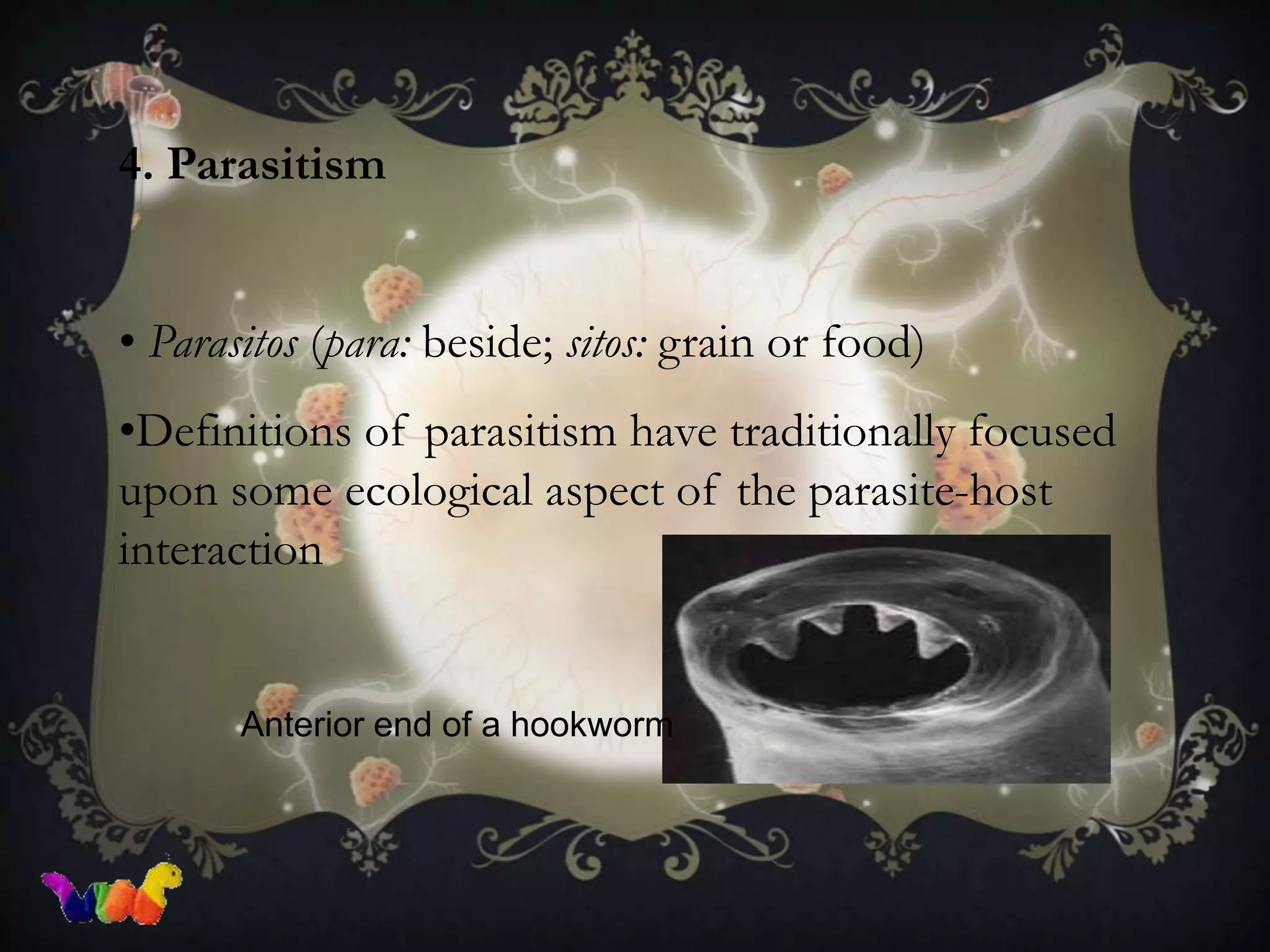This document discusses various types of symbiotic relationships including phoresis, commensalism, mutualism, and parasitism. It provides examples of each type of relationship and notes that phoresis and commensalism represent loose associations while mutualism and parasitism indicate more intimate associations. The document then focuses specifically on parasitism, defining parasites and discussing their effects on hosts as well as the effects of hosts on parasites.

























